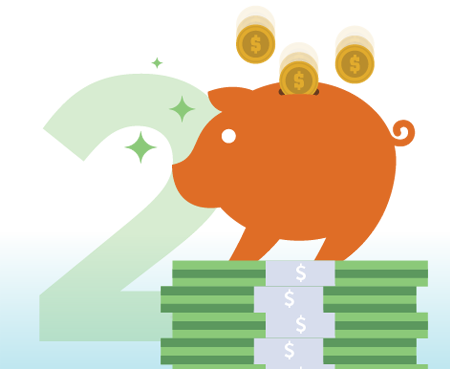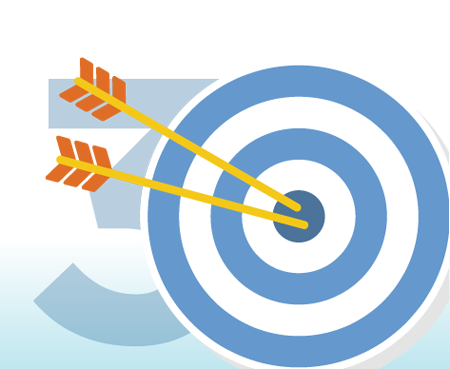Financial Health and Your Retirement Bucket
Picturing your retirement can help you plan for it accordingly. We like to use the bucket as a metaphor. Your retirement bucket has an inside and an outside. The inside represents your savings and investments, and the outside is painted with scenes from your dream retirement.
With good spending habits, you can fill your bucket and make that dream a reality.

What About Your Debt?
The trick to managing debt is always keeping it under your control. You can reduce it while working toward your retirement dreams. Save a little, pay off a little. Save a little more, pay off a little more.

Now You're on a Roll
Keep challenging yourself to manage your spending habits. If you can spend $10 or $20 less per week, incorporate those savings into your budget. Use that money to save more for your future or to reduce and eliminate debt. Your successful retirement outcome depends on good financial health.
Spender Tips From the Dean
I've never liked the phrase "living on a fixed income" because it implies no spending flexibility. That's certainly not our goal for you at NestEgg U. We are all spenders and we always will be, but it's important to manage expenses. Even in retirement.
Good spending becomes more important as you approach retirement. When you stop working for a living, you'll need a plan for spending the money you saved.
Your current spending habits will carry over into retirement. If you're a poor spender now, there's no magic switch that will make you a good spender when you retire. It takes a concerted effort to change. Start by creating a budget. Make it your goal to enter retirement with little or no debt. These two things will enhance your success.

Managing Your Spending Habits
Find three things that you could reduce or eliminate spending on.
Your Age
Retirement Age









